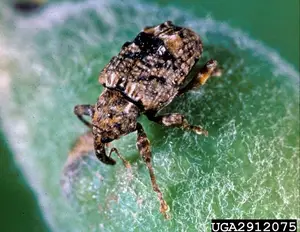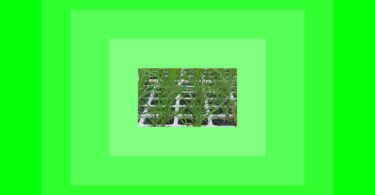Each month V.D. Kaviraj answers questions about plants and plant problems. Kaviraj is one of the foremost pioneers of Agro-homeopathy and author of the book, Homeopathy for Farm and Garden. Send your questions with pictures when possible – JPG or GIF format) to [email protected] with the subject “Plant Doctor”.
Dosing Plants: When I refer to treating plants with homeopathic remedies, this is the standard dosing procedure: Put 20 drops of a 6X potency in a litre of water. Succuss the bottle 50 times. Put this litre in the watering can, fill it up with 19 litres of tap water and stir. If the watering can is smaller, the amount of remedy put in must be proportionally smaller. Thus a 10 litre can needs only ½ litre and just 10 drops of the remedy. Apply the contents of the watering can to the roots of the plants to be treated.
Hello Dr. Kaviraj,
I live in Alberta, Canada and have a few prairie hardy apple trees. One is badly infected with fire blight. What remedy do you recommend?
Kindly,
Jean
Kaviraj: Hi Jean, to me it sounds like you can use either Aconite or Sulphur. If neither does the trick, determine the pH of the soil. If acidic, Calcarea phosphorica can do it. If more neutral, Ferrum sulphuricum.
——————————————-
Hi Dr. Kaviraj,
I recently purchased your book and am very excited about using homeopathy in my garden. I live in Vancouver Canada and have a very invasive bamboo (Fallopia japonica- Polygonum cuspidatum) also known as Japanese knotweed, in my back yard. I would like to eradicate this, although it is proving to be very difficult.
I would appreciate any advice you have.
Thanks,
Tina
Kaviraj :
Tina, it has just been discovered what healing capacity is found in Japanese knotweed. You may want to cash in on the trend. On the other hand, Juglans nigra may be tried. I am not certain if it will do anything, but I have good hopes. Bamboo is not easy to eradicate apart from digging up the rootstock.
——————————————
Dear Kaviraj,
Someone told me that use of rock salt [the one used in olden days with blackish shade] is good for Sugarcane. He claims better yield. Technically and chemically what are the effects of this?
Regards
Prashant Raut
Kaviraj:
Hi Prashant,
People claim many things. Rock dust may be good, because it contains so many minerals. Rock salt, although also containing minerals, seems to me either a mis-naming of rock dust or a not so clever thing to do. If the soil is becoming salty, what are you going to grow? The only way this could be beneficial is if it is very dilute and barely salty.
——————————————-

My peach crop was ruined this year by the Plum Curculio [Conotrachelus Nenuphar]. What Homeopathic Remedies do you recommend for it and when and how often do I spray?
Thank you,
Bob Luzader
Kaviraj:
Hi Bob,
Insects can be kept off plants in several ways. Suckers like aphids (softbodied insects) can be treated with Coccinella. Borers and grubs inside the plant or part thereof, can be treated with either Ledum or Thuja.
——————————————-
Dear Dr. Kaviraj,
We have Scots pines that got infected with Cyclaneusma Naemacyclus, producing a needle cast ….discolored needles. Is there anything we can do to deal with this?
Thank you
Bob and Marie O’Reilly
Kaviraj:
Hi Bob and Marie,
This is obviously a fungal disease. There are several remedies that come to mind. First is Silicea, the great anti-fungal remedy. However, considering the loss of needles, one could as easily think Carbo vegetabilis, due to loss of vital fluids. Salicylic acid is another remedy that comes to mind, although I think this would only be good in the beginning stages. Then again, if your soil is very acidic, it may simply be an excess of aluminium that causes the problem and in such cases Lycopodium would do the trick. If possible, have the soil analysed and pH determined, to see what problem is prominent. The more acidic the soil, the greater the aluminium excess.
——————————————
Dr. Kaviraj Sir,
Can you please suggest a homoeopathic medicine for perinicious rose stem disease?
Sincerely
Aneesa Shameer
Kaviraj:
It is a little difficult to prescribe on just a name of some disease. I need descriptions of symptoms. Otherwise we shall just turn this into an allopathic enterprise and have failures in prescription. Also, it is very handy if you take a picture with the mobile phone. That is what is asked at the beginning of this column. So what does it look like?






ARTICLE IS VERY EXITING AND OPEN THE DOOR OF MIND, GREAT……
It is very interesting Homeo medicins are use for plants deceases.Iam very much exited.Doctor we have Amla tree in our house some stems r dried.Because of so meny ants near the tree.Thats y tree is not healthy look,plz which medicine I should use.Thank u,Anu Sistla.
I never miss this column.
Dr.Kaviraj, a great man…… Ferrum Sulf is ok to make soil acidic ?